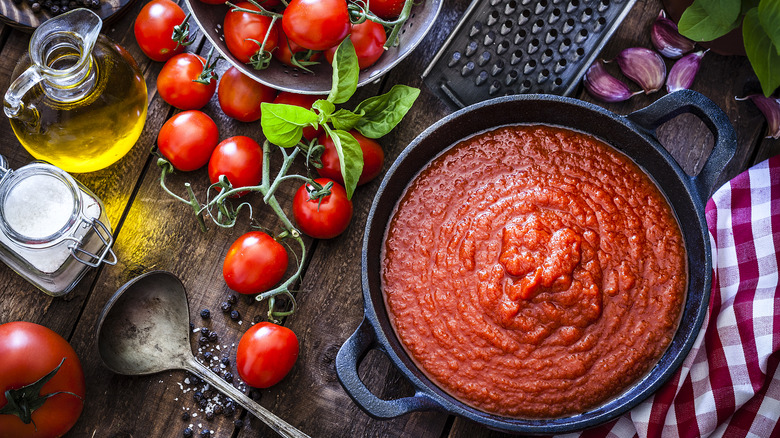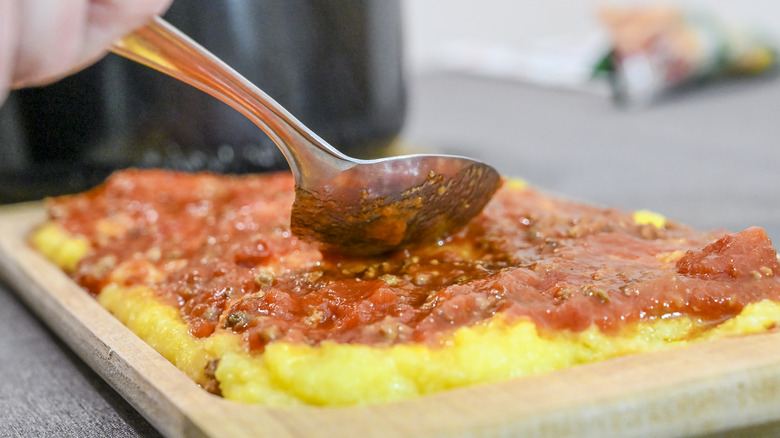Marinara Sauce Vs. Pomodoro: What's The Difference?
Italian cooking is all about the details. While two dishes might contain similar ingredients, just a few deviations in technique and assembly render completely different results. Such a careful distinction especially applies to pomodoro and marinara. While they're both sauces made from tomato, garlic, and olive oil, there are some key differences. Sugo di pomodoro is about rich tomato flavor, a characteristic amplified by fewer aromatic additions and a smooth consistency. Its thick texture sticks to pasta and can be used as a base to make other sauces.
Meanwhile, marinara is chunky and more herbal, with basil, oregano, and red pepper flakes adding a bright flavor. Marinara is more open to bold flavor additions and typically involves more components. Both are beloved classics in Italy and define iconic dishes from pizza to ravioli. Knowing the details of both sauces can help you understand the nuances between them and when to utilize each. So, let's dive into the details of pomodoro vs. marinara.
Pomodoro utilizes fewer ingredients for a tomato-forward flavor
The two sauces are made with either fresh or canned tomatoes — San Marzanos are an especially popular choice. However, to achieve pomodoro's homogeneous consistency, some chefs employ passata.
The preparation of the two sauces is similar, with both involving slow simmering in olive oil alongside aromatics. Marinara's chunkier, runnier consistency allows for diversified additions like peppers, herbs, lemon juice, anchovies, and white wine. Pomodoro sauce typically sticks to just a few simple ingredients to allow the tomato taste to take center stage, but it can be easily turned into a meat sauce if you want to kick it up a notch.
Both sauces have a great deal of flexibility when it comes to application — both are wonderful on the full spectrum of pasta dishes. Marinara is frequently utilized for dipping, such as alongside fried mozzarella sticks. It Italy, it's also common to see bright and chunky marinara sauce featured in seafood pasta dishes. Alternatively, pomodoro is sometimes used for pizza since its thicker consistency leads to a less soggy pie. Nevertheless, there's no incorrect application; it all comes down to a matter of textural preference.

